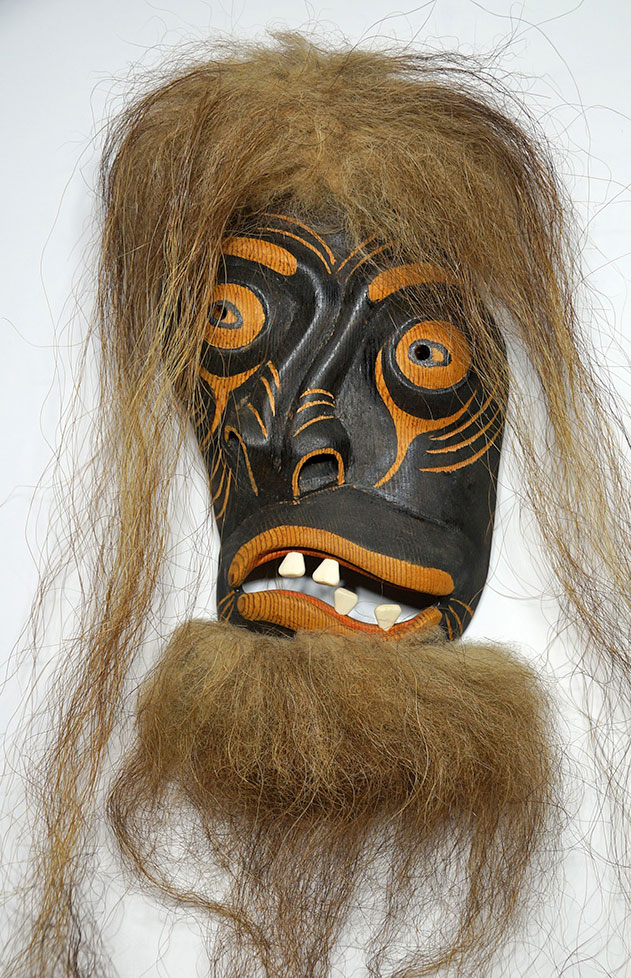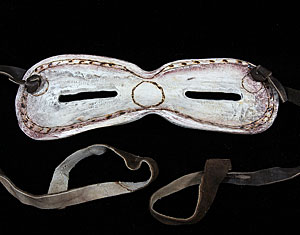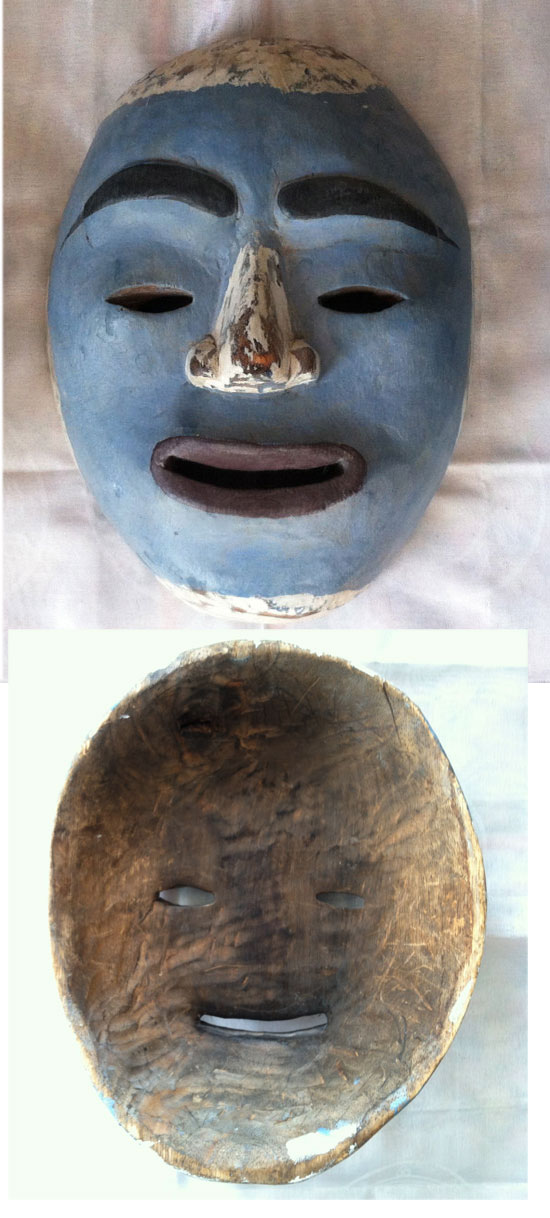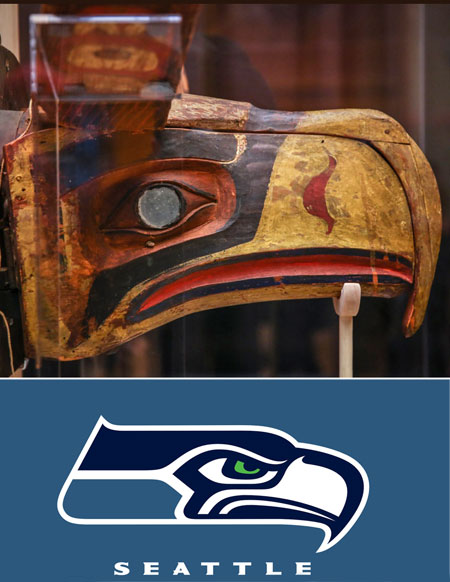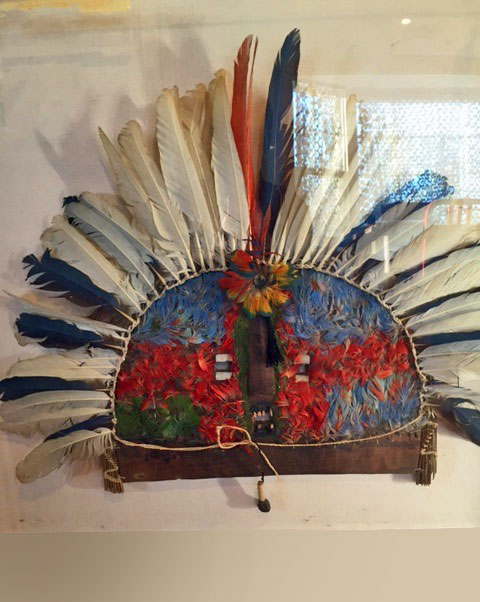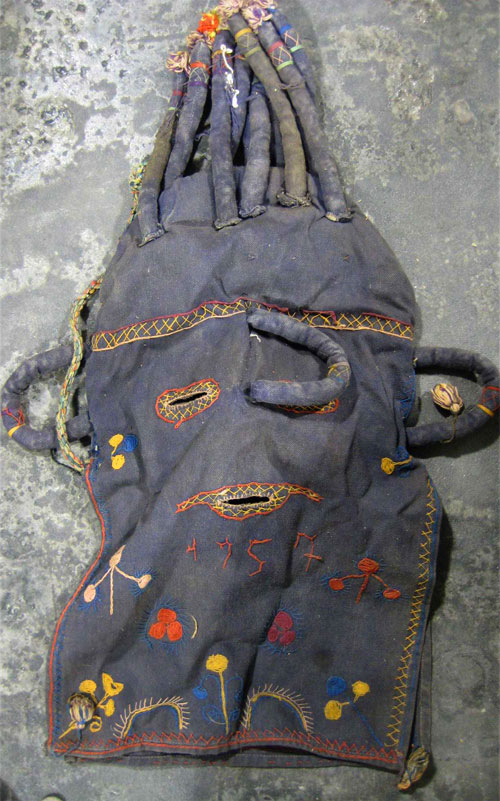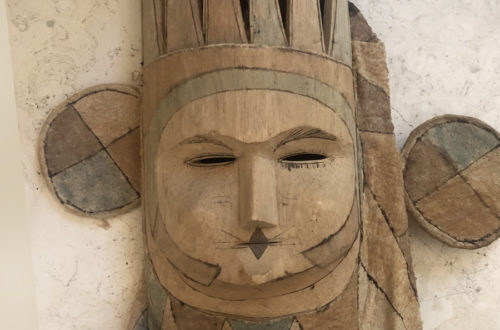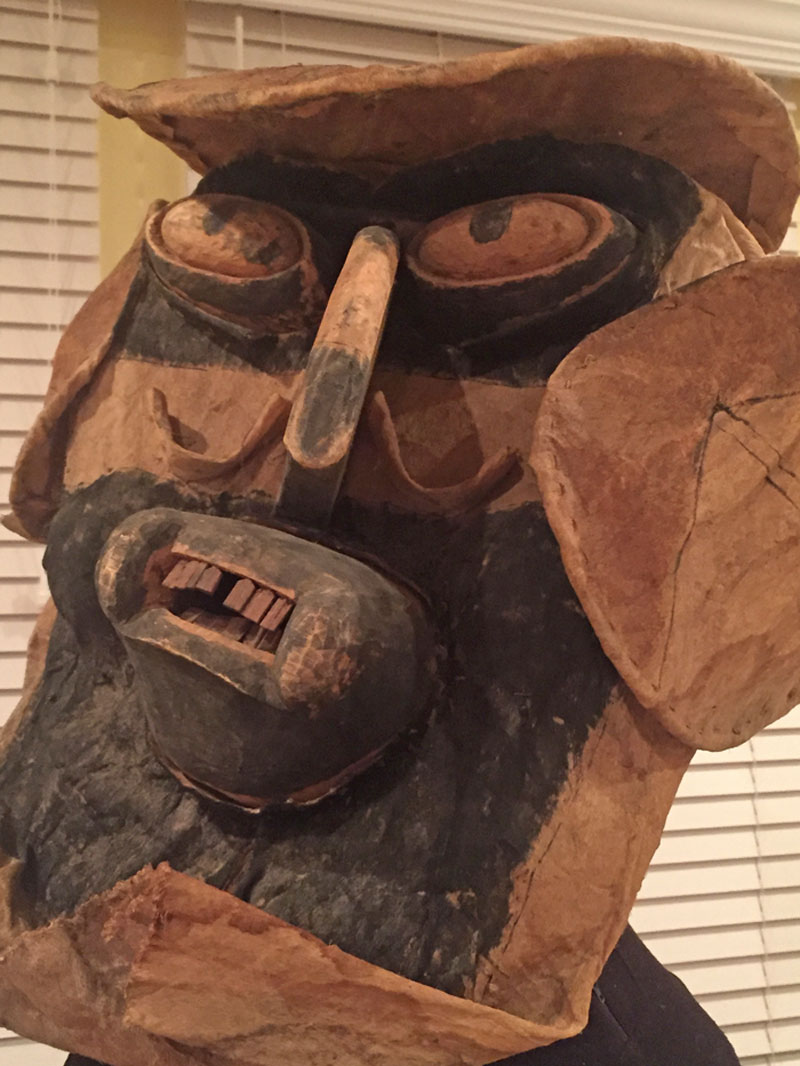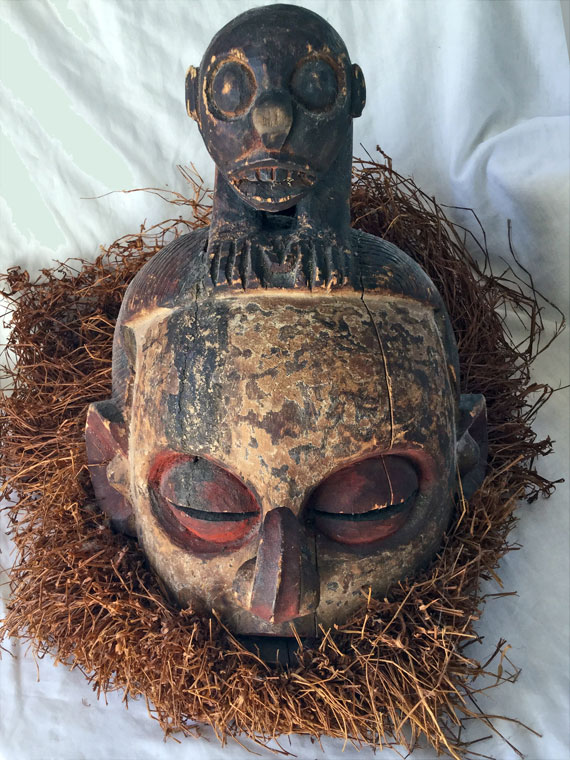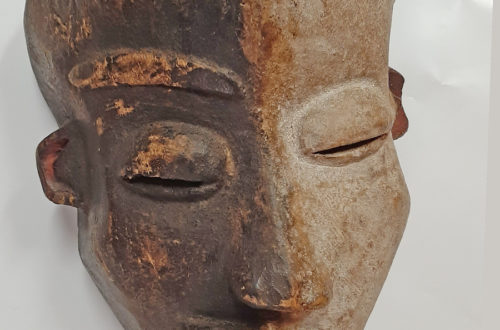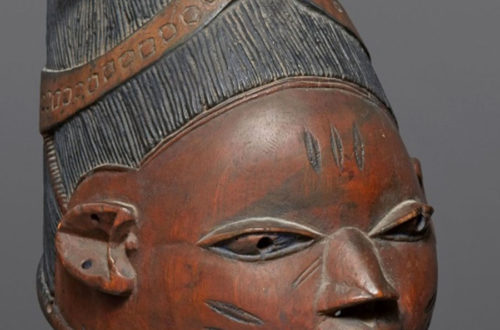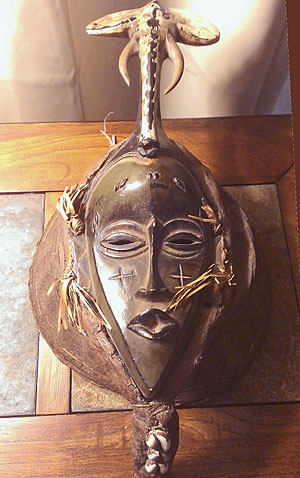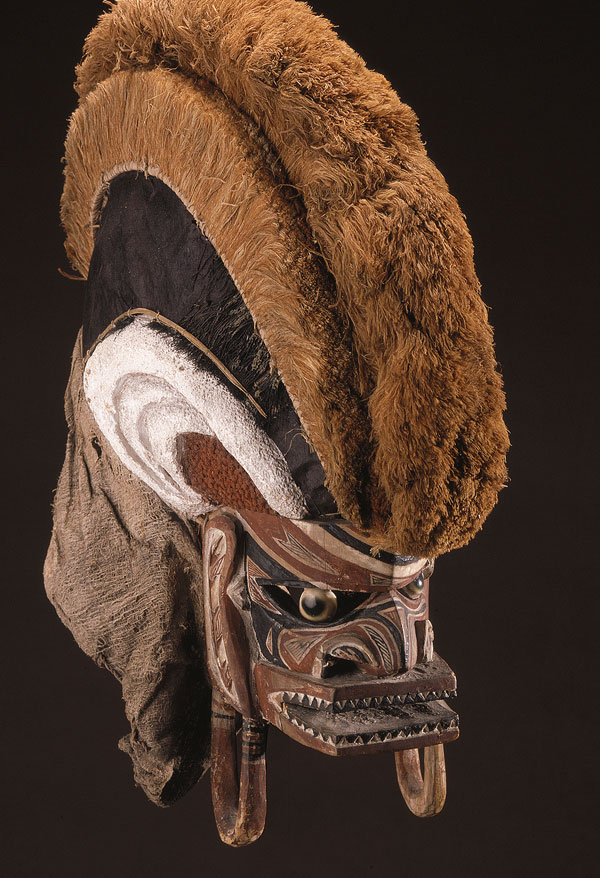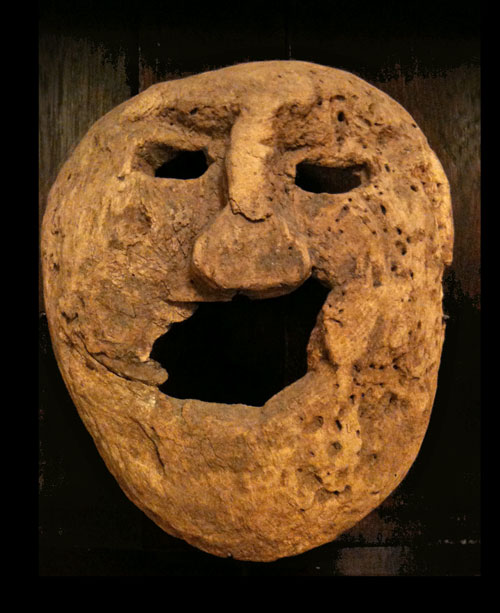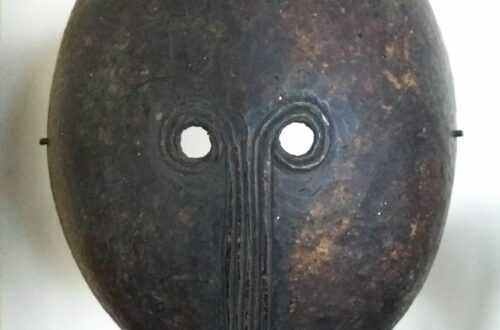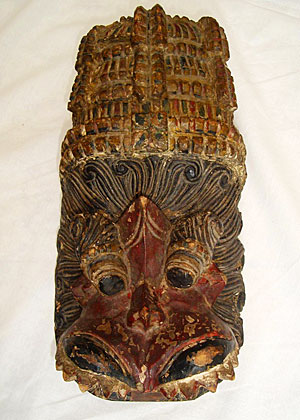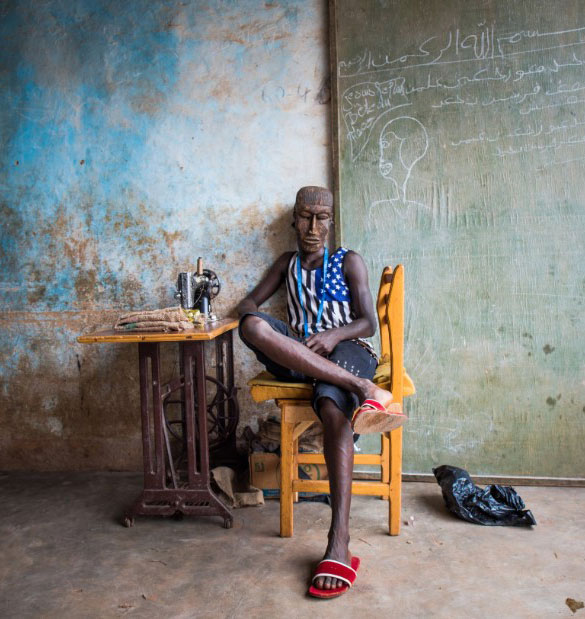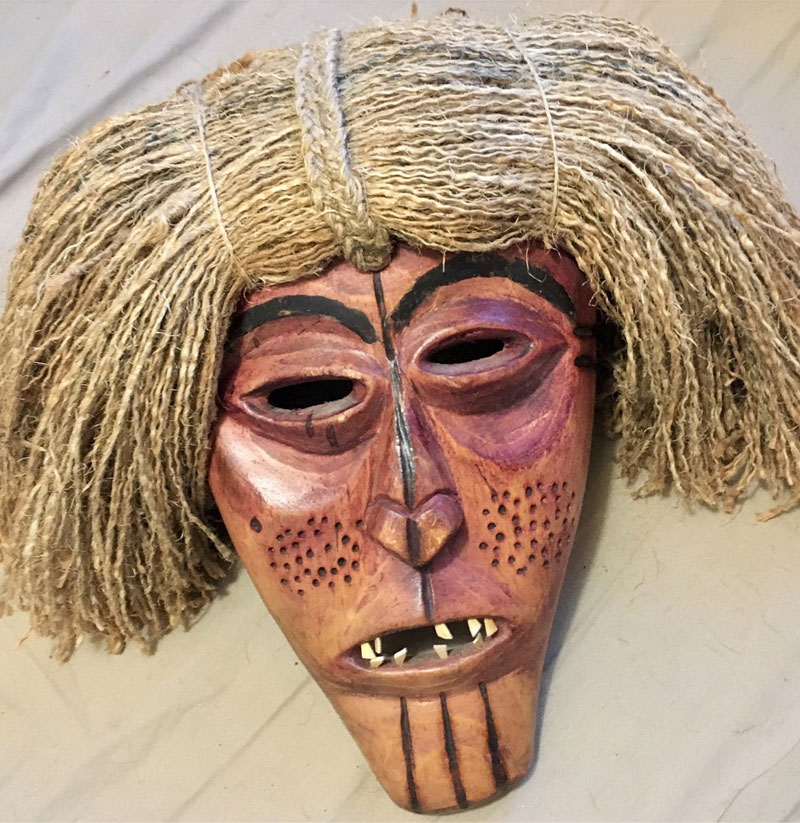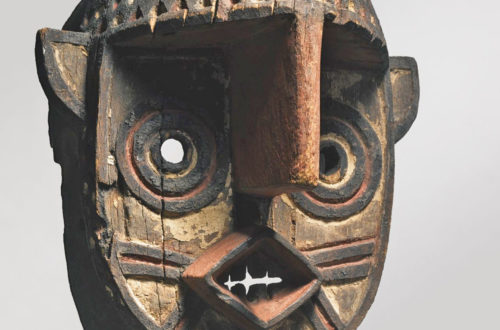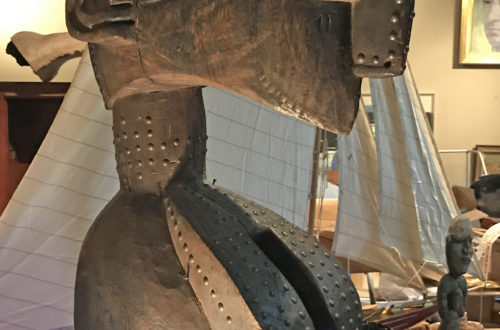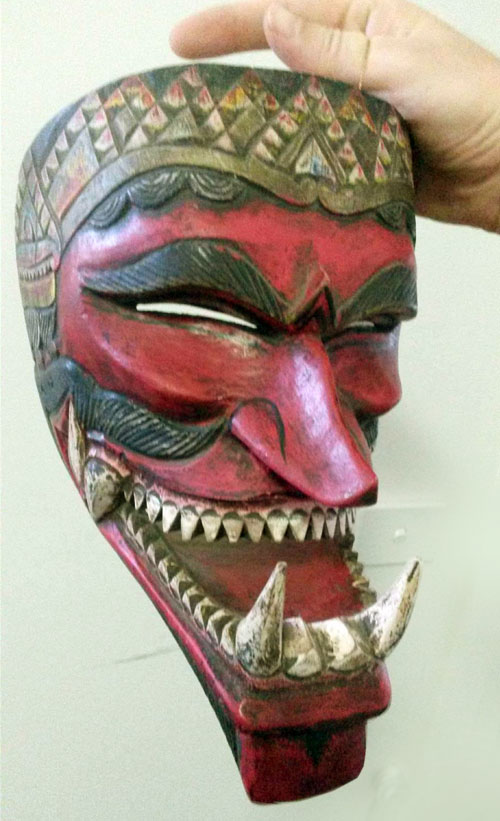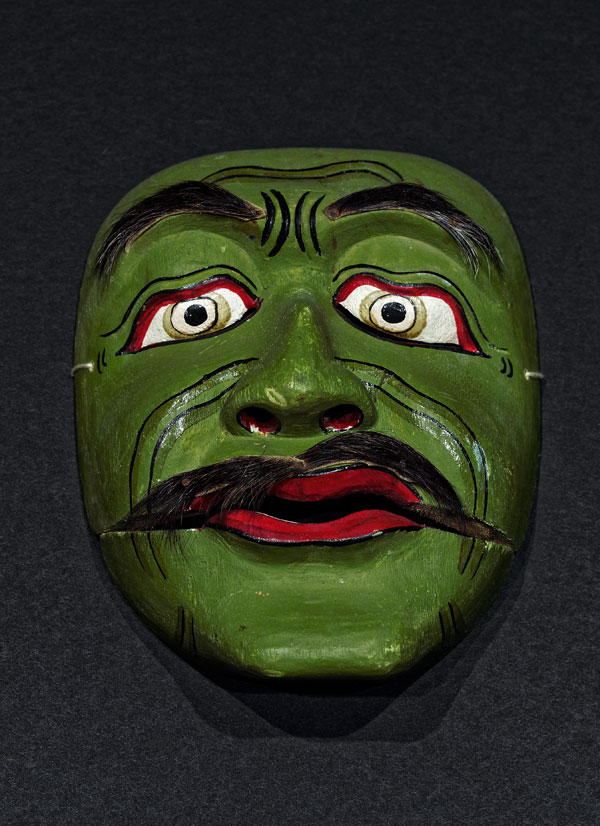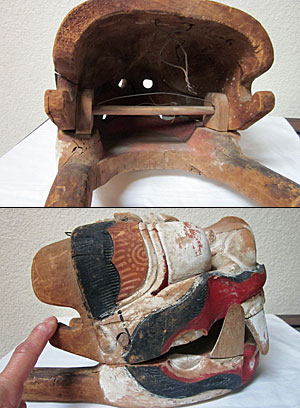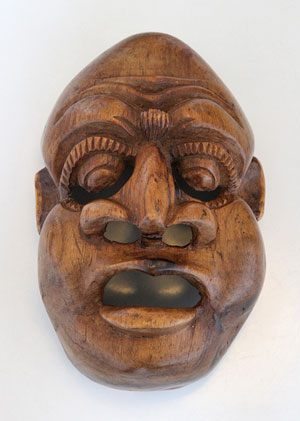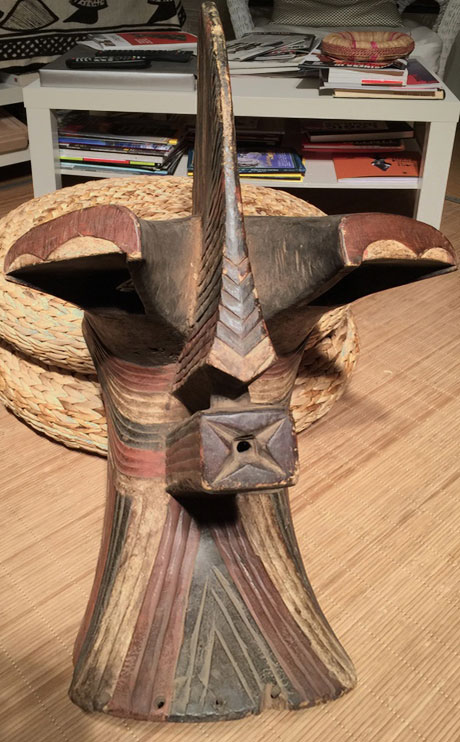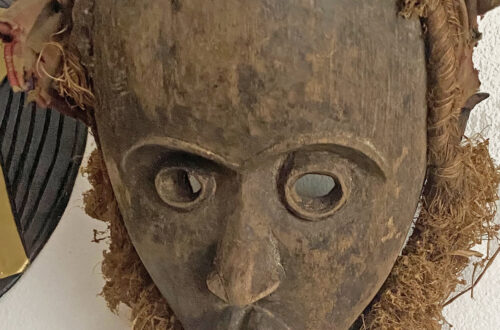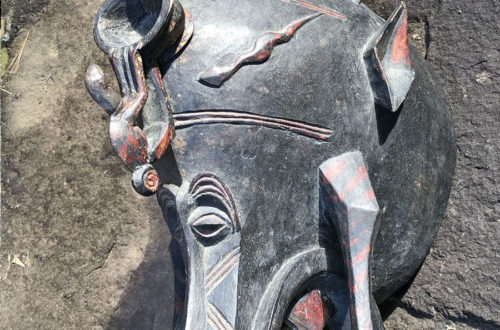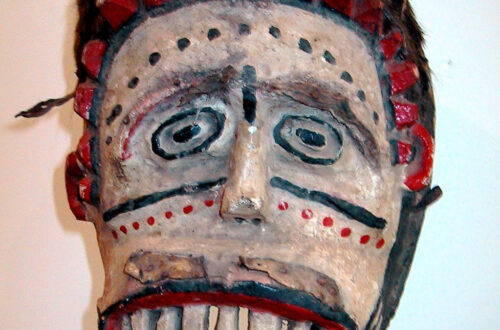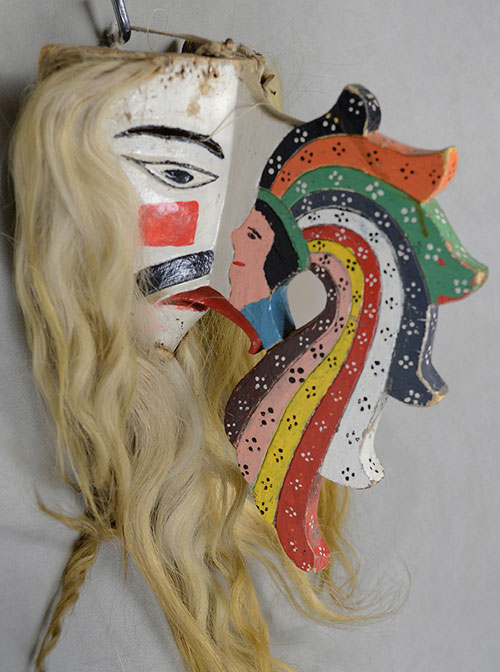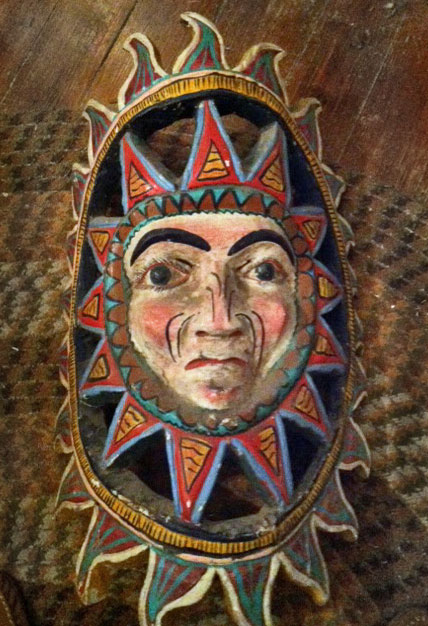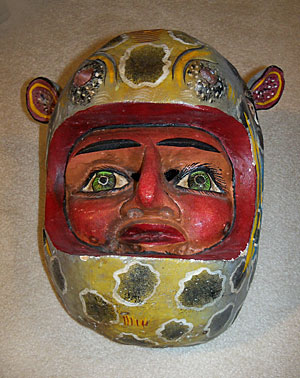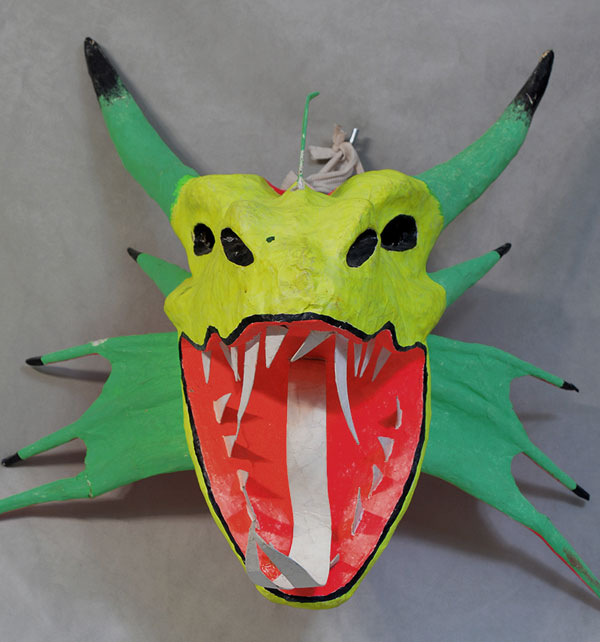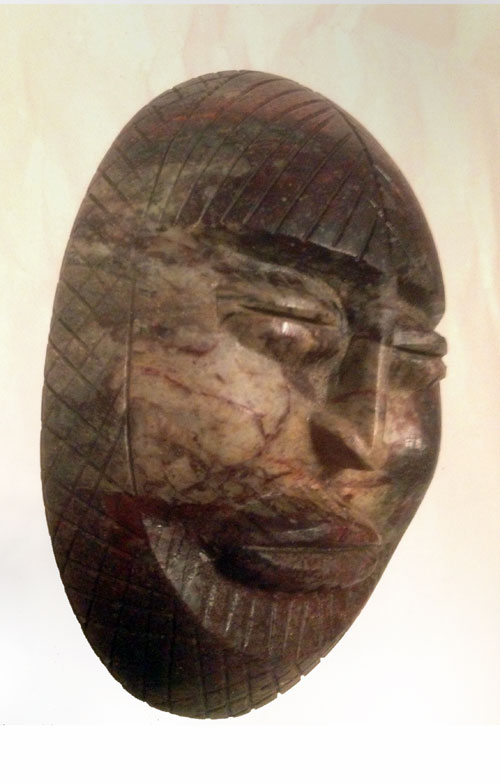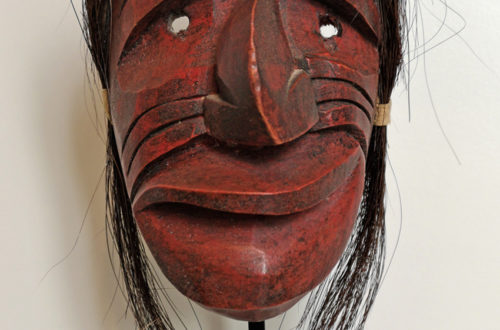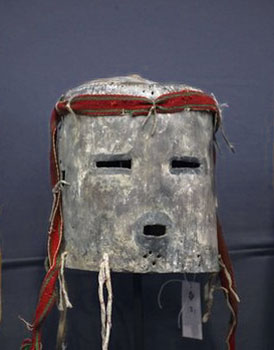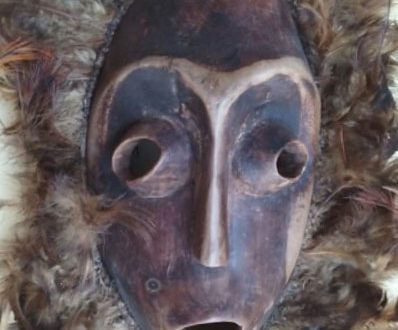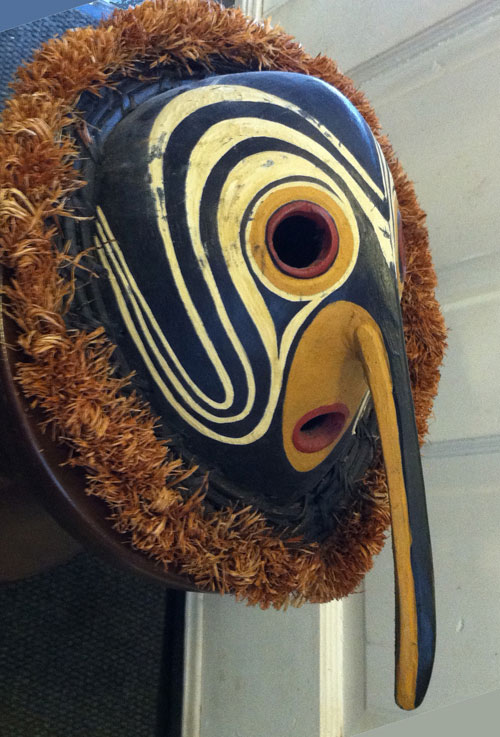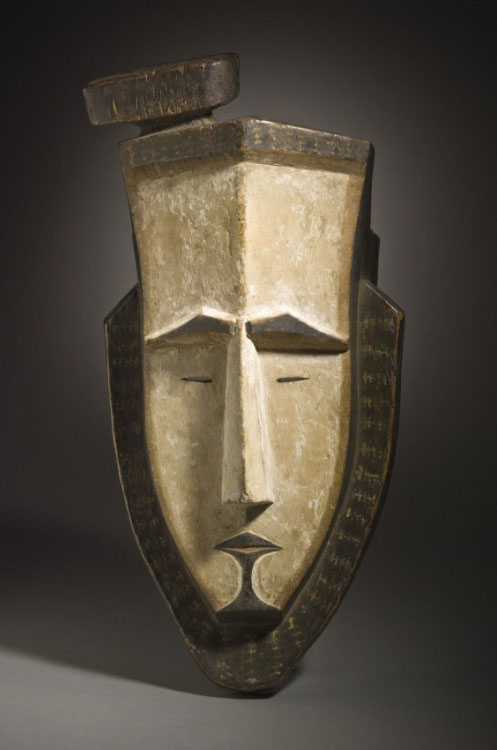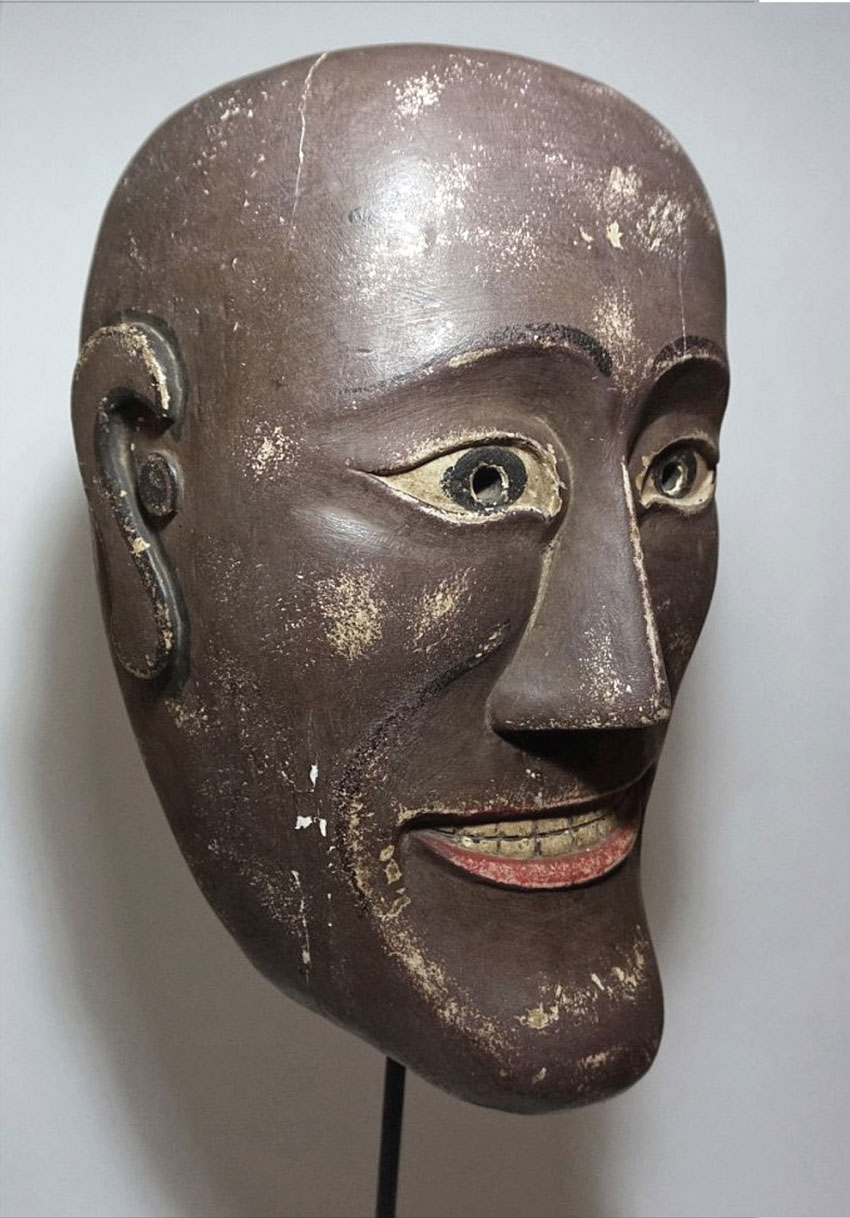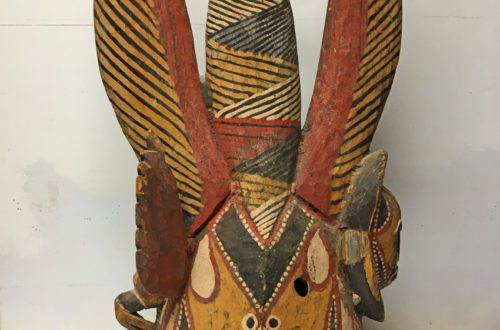Q: I managed to get the Kalaallit Inuit mask for only $75 from someone who thought it was a “Witch Doctor Mask” from Africa instead of traditional art from Greenland. Aaron, 922 A: I found this on the internet. “Not much is known about the role of masks in traditional Greenland societies and not many masks exist prior to the turn of the 20th century. The reason may lie in the mask’s strong personal link with its owner. Masks have often followed their owners to the grave or perhaps been destroyed by death. Another theory is that the mask’s power was so great that it had to be destroyed after…
-
-
Amazon Indian spirit mask
Q: I just uncovered this mask of my fathers who passed almost 20 years ago. It’s in a plexiglass frame, so I can only get the front view unfortunately. It has many colorful feathers and I think shell around the eyes. Any thoughts on where it might be from would be greatly appreciated. Raaismom, 921 A: Made by the Tapirape tribe in the southeast lowlands of the Brazilian Amazon, this large mask is called a “big face” in Portuguese. Note how beautiful the toucan and parrot feathers are. I believe these masks were made to display the spirits of enemy warriors. This valuable piece of Tapirape art deserves to…
-
Congo style mask
Q: I have a tribal helmet mask that my mom had and she has passed away. I only know she got it from an estate sale of a 90 yr old veteran that traveled the world. Sorry I can’t supply you with any more info, maybe you can tell me about it. Vicky, 920 A: This appears to be a traditional design from one of the cultures in the Democratic Republic of Congo. I’m not experienced enough to name the particular group, or the name of the ceremony it is used for. And there is always the chance that it combines characteristics of two or more ethnic groups. Another…
-
Spectacular mask from the South Pacific
Part of the Oceanic area is the South Pacific, which includes the small islands east of Papua New Guinea. Many of the islands were first visited by Americans and Europeans about 200 years ago at the time Africa was being colonized as well. Both areas had masks and other traditional art that fascinated the explorers. This Malagan mask from the island of New Ireland, used for ceremonies honoring the dead, is indeed spectacular. Rarely do we see Oceanic masks of this quality outside museums or books. From a museum collection, this mask is shown on page 70 of our new book, Masks of the World.
-
The Masks of West Africa
Bob, In case you missed this. Herb http://www.cnn.com/2016/02/14/travel/cnnphotos-behind-the-masks-west-africa/index.html I’m so pleased that Herb sent us the link. Behind the Masks in West Africa is a beautiful collection of 10 carefully posed portraits of ordinary people wearing different masks. They were taken by Benazir Wehelie as a Special to CNN. I hope you enjoy this little show.
-
The dreaded Cakil from Java
Q: While in Yogyakarta last year, I spotted this Cakil topeng. After discovering the price tag, I spent a week looking for a similar mask of equal quality. Failing, I returned and paid 1.55 million Rupiah (after substantial haggling). A mark carved into the back is the emblem of the Sultan of Yogyakarta. The seller claimed it was at least 60 years old, likely more. An unrelated person recently told me the number of feathers on the wings of the crest indicate the mask was made during the reign of the seventh sultan. This would make it between 95 and 129 years old, but I can’t find anything to substantiate…
-
The Songye Kifwebe mask
Q: I bought this male Songye Kifwebe mask a month ago from a seller in Brussels. It is a huge mask of this type. At least the biggest I’ve ever seen: 77cmX31cmX51cm, W: 3,4kg. Are this big masks used in rituals, festivals? How old do you think it is? Thanks. Ricardo, 916 A: The Sonye people come from the Democratic Republic of Congo. Early accounts of their Kifwebe classified them as fetishes that function as caretakers. It is evident that the Kifwebe is a powerful social instrument probably associated with healing and rituals of mystical and transformational control. This highly abstracted design resembles nothing one would see in the real…
-
Azteca masks are amazing
Q: I acquired a few more masks in the last few weeks. The last is an Azteca mask from Danza de la Conquista in Veracruz. I’m sure you’ll recognize it. I won that at an auction along with 2 diablo con chintetes masks from Guerrero, which I’m going to sell. Enjoy! Aaron, 915 A: We are so lucky that Aaron continues to share his great finds with us. This is one of the most extraordinary dance masks from Mexico. Or anywhere for that matter. Look at that amazing protrusion comming out of the face! A similar Azteca is shown and described on page 124 of our new book, Masks of…
-
Inuit small stone mask
Q: I purchased this small mask carved in some type of marbled stone at an antique market in Pickering, Ontario, Canada. It is about 5-1/2″ X 3-1/2″. I paid $85.00 for it. I have no idea whether there is any real value to the piece. I have been collecting interesting masks over the years and I just could not resist this one. Curious to know if you might know thew cultural origin…and if in fact there is any value? Mo, 914 A: A lot of small stone sculptures are made by the Inuit of Alaska. Perhaps some of the First Nations people of northern Canada do the same. The question…
-
Modern Mosquito Mask
Q: I was wandering around a Goodwill “end of the rode” store, where items are priced by weight! They were pushing large carts filled with ephemera towards the center of the store. People always make a wild dash to be the first one at the bins!! I waited until everyone had gone to another bin….and I found this mask. It cost me $1.99! The mask is very light wood and reminds me of the Northeast masks of Canada. Any ideas about it would be appreciated. Regardless of it’s origins…I love it. Mickey, 913 A: You can’t beat that price. Well made tourist masks, wherever they come from, cost more than…
